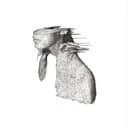The D major scale follows the universal major scale formula: D to E (whole step), E to F♯ (whole step), F♯ to G (half step), G to A (whole step), A to B (whole step), B to C♯ (whole step), and C♯ to D (half step). With two sharps (F♯ and C♯) in its key signature, D major creates a brilliant, triumphant sound that has made it a perennial favorite for celebratory and victorious musical passages. The interval pattern (2-2-1-2-2-2-1 semitones) maintains the major scale's characteristic bright quality while the specific placement of sharps gives D major its distinctive radiant character.
Why D Major is a Favorite for Composers
D major holds a special place in Western music for multiple reasons. Its bright, forward-moving character makes it ideal for expressing triumph, joy, and celebration, which is why you'll find it featured prominently in wedding marches, graduation ceremonies, and festive occasions. For string players, D major resonates naturally with the violin's open D and A strings, making it exceptionally resonant and allowing for brilliant passagework. Brass instruments also shine in D major, as the key sits comfortably in their optimal range, which explains its prevalence in orchestral fanfares, symphonic finales, and ceremonial band music.
Practical Applications and Chord Progressions
The D major scale generates seven diatonic chords that form the harmonic foundation for countless beloved songs. The primary chords (D major, G major, and A major) create powerful I-IV-V progressions used extensively in rock, folk, and country music. Songs like "Clocks" by Coldplay and "I'm Yours" by Jason Mraz demonstrate D major's versatility in contemporary music. Classical composers from Beethoven to Brahms have written some of their most celebrated works in D major, taking advantage of its brilliant sound and natural fit with orchestral instruments. Practice the scale ascending and descending, then explore improvising over D-G-A chord progressions to develop your melodic vocabulary.
Learning Tips and Technique Development
Piano students should practice D major with proper fingering (right hand: 1-2-3-1-2-3-4-5; left hand: 5-4-3-2-1-3-2-1), paying special attention to the smooth thumb crossover. Start slowly at 60 BPM, ensuring both sharps (F♯ and C♯) are played with confidence and precision. For guitarists, D major offers excellent opportunities to develop position playing and utilize open D, G, and B strings for enhanced resonance. Wind instrument players will find D major particularly comfortable, as it sits naturally under the fingers and produces a focused, projecting tone that cuts through ensemble textures.
Understanding D major's position in the circle of fifths (two sharps) helps musicians grasp key relationships and modulation patterns. Coming from G major (one sharp), D major is the natural next step in your journey through sharp-based keys. As you master D major, you're preparing yourself for A major (three sharps) and E major (four sharps), building a progressive understanding of sharp-based keys. Explore its relative minor, B Natural Minor, and parallel minors like D Harmonic Minor to deepen your understanding of key relationships and emotional range.





